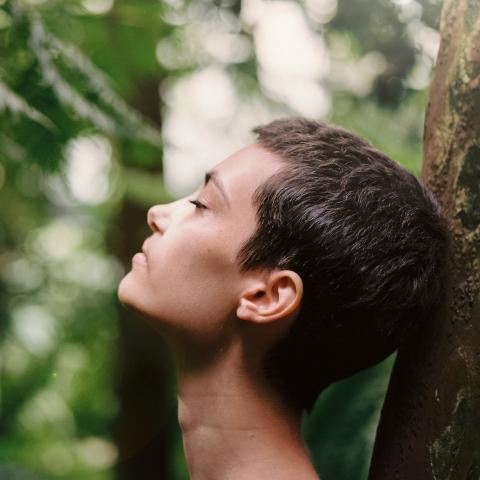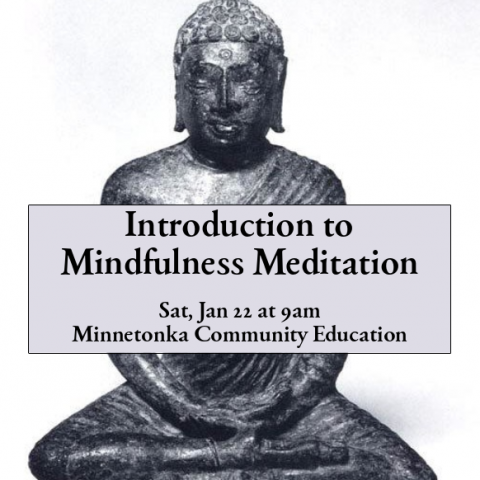The first foundation of mindfulness is contemplation of the body (kayanupassana). When you learn to listen to your bodies and stay with sensations, you can become more grounded and less reactive. Contemplation of the body helps you make friends with your body, and accept the fact that this body is not "your" body, but rather just a temporary form. A large body of scientific research suggests that simply paying attention to your body helps ward off disease, improves cognitive and emotional functioning, and much more. However, simply staying present with the sensations in your body is as simple as it is challenging.
breathing
Related Content
Episode Number
28
Many of us get so wrapped up in the things around us that we rarely pay attention to the spaces between things. And yet space is always present. In this episode, we pay attention to the space between breaths, between our thoughts, in our physical world, and that surrounds sound. Developing a more spacious view of the world helps to open the mind, dissolve boundaries, and let go of the ego.
To leave a comment about this episode, visit matthewtift.com/prettygood/28. To suggest a topic for a future episode or tell me more about yourself and why you are listening, visit matthewtift.com/contact. The theme music is "Maxixe" performed by Edson Lopes under CC BY 3.0.
To leave a comment about this episode, visit matthewtift.com/prettygood/28. To suggest a topic for a future episode or tell me more about yourself and why you are listening, visit matthewtift.com/contact. The theme music is "Maxixe" performed by Edson Lopes under CC BY 3.0.
Episode Number
26
Learning to breathe and relax can deepen your capacity to stay present to the events of your life. This meditation can provide space for you to notice as feelings and thoughts arise, shift, and fade away. Rather than push away emotions, this practice allows you to tune in to those emotions and learn how to ride the waves of sensations that we each experience throughout our lives.
To leave a comment about this episode, visit matthewtift.com/prettygood/26. The theme music is "Maxixe" performed by Edson Lopes under CC BY 3.0.
To leave a comment about this episode, visit matthewtift.com/prettygood/26. The theme music is "Maxixe" performed by Edson Lopes under CC BY 3.0.
Episode Number
11
In this episode of Pretty Good Meditation, we practice a well-known type of yogic breathing called ujjayi pranayama, or "victorious breath."
To leave a comment about this episode, visit matthewtift.com/prettygood/11. The theme music is "Maxixe" performed by Edson Lopes under CC BY 3.0.
To leave a comment about this episode, visit matthewtift.com/prettygood/11. The theme music is "Maxixe" performed by Edson Lopes under CC BY 3.0.

Breath is an ever-present aspect of life, which is part of the reason why "mindfulness of breathing," or ānāpānasati in Pāli, is probably the most common form (object) of meditation. Typically, the practice involves focusing attention on the physical sensations caused by the movement of the breath, the in-breaths and the out-breaths. Mindfulness of breathing is a feeling practice, not a thinking practice.
Episode Number
9
In this episode of Pretty Good Meditation, we practice the most common form of meditation: ānāpānasati, or "mindfulness of breathing."
To leave a comment about this episode, visit matthewtift.com/prettygood/9. The theme music is "Maxixe" performed by Edson Lopes under CC BY 3.0.
To leave a comment about this episode, visit matthewtift.com/prettygood/9. The theme music is "Maxixe" performed by Edson Lopes under CC BY 3.0.
Episode Number
2
Between each in breath and out breath, there is a pause. Between each out breath and in breath, there is a pause. We can use these pauses as the focus in our meditation.
To leave a comment about this episode, visit matthewtift.com/prettygood/2. The theme music is "Maxixe" performed by Edson Lopes under CC BY 3.0.
To leave a comment about this episode, visit matthewtift.com/prettygood/2. The theme music is "Maxixe" performed by Edson Lopes under CC BY 3.0.
Episode Number
1
When I first started to get serious about meditation and wanted to establish a daily meditation practice, I literally began with two minute meditations. I found a website called QuietKit.com and began with their two minute guided meditations. So it seemed fitting for this inaugural episode of Pretty Good Meditation to offer a two minute meditation.
To leave a comment about this episode, visit https://matthewtift.com/prettygood/1. The theme music is "Maxixe" performed by Edson Lopes under CC BY 3.0.
To leave a comment about this episode, visit https://matthewtift.com/prettygood/1. The theme music is "Maxixe" performed by Edson Lopes under CC BY 3.0.
